 W
W40 mm grenade is a common design for grenade launcher ammunition. It consists of a low velocity shell with a caliber of 40 mm (1.57 in).
 W
WAn aerial torpedo is a torpedo launched from a fixed-wing aircraft or helicopter from the air which subsequently drops into the water, after which the weapon propels itself to the target.
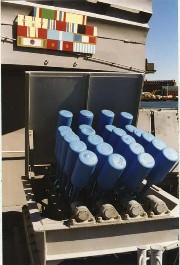 W
WAn anti-submarine weapon (ASW) is any one of a number of devices that are intended to act against a submarine and its crew, to destroy (sink) the vessel or reduce its capability as a weapon of war. In its simplest sense, an anti-submarine weapon is usually a projectile, missile or bomb that is optimized to destroy submarines.
 W
WThe armour-piercing capped ballistic cap (APCBC) is a type of armor-piercing shell introduced in the 1930s. The ballistic cap was a thin shell, typically metal, that fitted over the rounded nose of an otherwise unchanged armour-piercing round to improve its aerodynamics. This allowed the APCBC shells to retain higher velocities, delivering more energy to the target, especially at long range. On impact the shell crumpled, allowing the armour-piercing component to impact as normal.
 W
WArmor-piercing ammunition is a type of projectile designed to penetrate either body armor or vehicle armor.
 W
WArmour-piercing fin-stabilized discarding sabot (APFSDS), long dart penetrator, or simply dart ammunition, is a type of kinetic energy penetrator ammunition used to attack modern vehicle armour. As an armament for main battle tanks, it succeeds armour-piercing discarding sabot (APDS) ammunition, which is still used in small or medium caliber weapon systems.
 W
WAn arrow is a fin-stabilized projectile launched by a bow. A typical arrow usually consists of a long, stiff, straight shaft with a weighty arrowhead attached to the front end, multiple fin-like stabilizers called fletchings mounted near the rear, and a slot at the rear end called nock for engaging the bowstring. A container or bag carrying additional arrows for convenient reloading is called a quiver.
 W
WIn ballistics, the ballistic coefficient (BC) of a body is a measure of its ability to overcome air resistance in flight. It is inversely proportional to the negative acceleration: a high number indicates a low negative acceleration—the drag on the body is small in proportion to its mass. BC can be expressed with the units kilogram per square meter (kg/m2) or mass pound per square inch (lbs/in2).
 W
WA ballistic table or ballistic chart is a tool which predicts the trajectory of a projectile, and is used to compensate for physical effects in order to increase the probability of the projectile reaching the intended target. Ballistic tables are used in hunting, sport shooting, military and scientific applications. Corrections in ballistic tables are given relative to a zero range. Ballistic charts are often given in angular measurements, with units in either milliradians (mil) or minutes of arc (moa). The tables are usually generated using computer programs built on mathematical functions. The number of inputs to the ballistic calculator can sometimes vary depended on the specific generator, or the user may choose to only input certain variables.
 W
WA bean bag round, also known by its trademarked name flexible baton round, is a type of baton round, fired from a shotgun, and used for less lethal apprehension of suspects.
 W
WBlack Talon is a brand of hollow-point pistol and rifle ammunition introduced in 1991 by Winchester, primarily intended for law enforcement and personal defense use. Black Talon rounds were known for the unique construction of the bullet and its sharp petal shape after expansion following impact with tissue or other wet media. Black Talon ammunition was produced in the following calibers: 9mm Luger, 10mm Auto, .40 S&W, .45 ACP, .357 Magnum, .44 Magnum, .300 Winchester Magnum, .308 Winchester, .338 Winchester Magnum, and .30-06 Springfield.
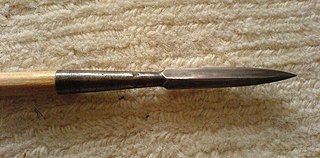 W
WA bodkin point is a type of arrowhead. In its simplest form it is an uncomplicated squared metal spike, and was used extensively during the Middle Ages. The typical bodkin was a square-section arrowhead, generally up to 11.5 cm (4.5 in) long and 1 cm (0.39 in) thick at its widest point, tapered down behind this initial "punch" shape. Bodkin arrows complemented traditional broadhead arrows, which continued to be used, as the sharp, wide cutting surface of the broadhead caused more serious wounds and tissue damage than the bodkin arrowhead.
 W
WA bullet is a kinetic projectile and a component of firearm ammunition that is expelled from a gun barrel during shooting. The term is from Middle French and originated as the diminutive of the word boulle (boullet), which means "small ball". Bullets are made of a variety of materials such as copper, lead, steel, polymer, rubber and even wax. They are available either singly, as in muzzle-loading and cap and ball firearms, or as components of paper cartridges, but much more commonly in the form of metallic cartridges. Bullets are made in various shapes and constructions depending on the intended applications, including specialized functions such as hunting, target shooting, training and combat.
 W
WCanister shot is a kind of anti-personnel artillery ammunition. Canister shot has been used since the advent of gunpowder-firing artillery in Western armies. However, canister shot saw particularly frequent use on land and at sea in the various wars of the 18th and 19th century. Canister is still used today in modern artillery.
 W
WA cannon is any large tubular firearm designed to fire a heavy projectile over a long distance. They were first used in Europe and China, and were the archetypical form of artillery. Round shot and grapeshot were the early projectiles used in cannon.
 W
WA cast bullet is made by allowing molten metal to solidify in a mold. Most cast bullets are made of lead alloyed with tin and antimony; but zinc alloys have been used when lead is scarce, and may be used again in response to concerns about lead toxicity. Most commercial bullet manufacturers use swaging in preference to casting, but bullet casting remains popular with handloaders.
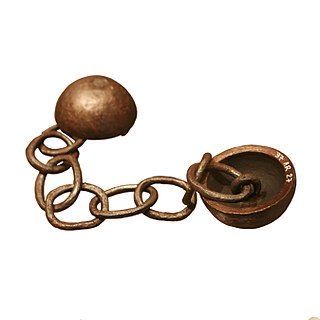 W
WIn artillery, chain shot is a type of cannon projectile formed of two sub-calibre balls, or half-balls, chained together. Bar shot is similar, but joined by a solid bar. They were used in the age of sailing ships and black powder cannon to shoot masts, or to cut the shrouds and any other rigging of a target ship.
 W
WThe HK69A1 is a 40 mm grenade launcher developed and produced by the German arms manufacturer Heckler & Koch (H&K). The weapon was designed to engage enemy troops and strongpoints out to a distance of 350 m; it can also be used to deploy smoke grenades and illumination flares.
 W
WExternal ballistics or exterior ballistics is the part of ballistics that deals with the behavior of a projectile in flight. The projectile may be powered or un-powered, guided or unguided, spin or fin stabilized, flying through an atmosphere or in the vacuum of space, but most certainly flying under the influence of a gravitational field.
 W
WA flechette fleh-SHET is a pointed steel projectile with a vaned tail for stable flight. The name comes from French fléchette, "little arrow" or "dart", and sometimes retains the acute accent in English: fléchette. They have been used as ballistic weapons since World War I. Delivery systems and methods of launching flechettes vary, from a single shot, to thousands in a single explosive round. The use of flechettes as antipersonnel weapons has been controversial.
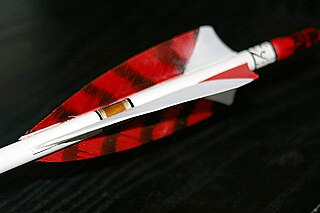 W
WFletching is the fin-shaped aerodynamic stabilization device attached on arrows, bolts, or darts, typically made from light, semi-flexible materials such as feathers or bark. Each piece of such fin is a fletch, also known as a flight or feather. A fletcher is a person who attaches fletchings to the shaft of arrows.
 W
WGlaser Safety Slug is a frangible bullet made by Cor-Bon/Glaser, a subsidiary of Dakota Ammo, an American ammunition company based in Sturgis, South Dakota. The Glaser Safety Slug was developed by Jack Canon in 1975, the same year the company was founded by Armin Glaser.
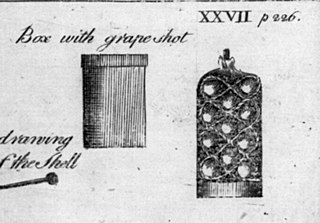 W
WIn artillery, a grapeshot is an ammunition that consists of a collection of smaller-caliber round shots packed in tight geometric arrangements into a canvas bag and separated from the gunpowder charge by a metal wadding, rather than being a single solid projectile. When assembled, the shot resembled a cluster of grapes, hence the name. Grapeshots were used both in land and naval artilleries. On firing, the canvas wrapping disintegrates and the contained balls scatter out from the muzzle, giving a ballistic effect similar to a giant shotgun.
 W
WHeated shot or hot shot is round shot that is heated before firing from muzzle-loading cannons, for the purpose of setting fire to enemy warships, buildings, or equipment. The use of hot shot dates back centuries and only ceased when vessels armored with iron replaced wooden warships in the world's navies. It was a powerful weapon against wooden warships, where fire was always a hazard. Its use was mainly confined to shore batteries and forts, due to the need for a special furnace to heat the shot, and their use from a ship was in fact against Royal Navy regulations because they were so dangerous, although the American ship USS Constitution had a shot furnace installed for hot shot to be fired from her carronades. The French Romaine-class frigates originally also featured the device, but they proved impractical, dangerous to the ships themselves, and were later discarded.
 W
WHit-to-kill, or kinetic kill, is a term used primarily in the military aerospace field to describe weapons that deliver their destructive power by hitting the target at high velocity and do not contain an explosive warhead. It has been used primarily in the anti-ballistic missiles (ABM) and anti-satellite weapons (ASAT) area, but some modern anti-aircraft missiles are also hit-to-kill. Hit-to-kill systems are part of the wider class of kinetic projectiles, a class that has widespread use in the anti-tank field.
 W
WA javelin is a light spear designed primarily to be thrown, historically as a ranged weapon, but today predominantly for sport. The javelin is almost always thrown by hand, unlike the sling, bow, and crossbow, which shoot projectiles from a mechanism. However, devices do exist to assist the javelin thrower in achieving greater distance, generally called spear-throwers.
 W
WA kinetic energy penetrator is a type of ammunition designed to penetrate vehicle armour using a flechette-like, high-sectional density projectile. Like a bullet, this type of ammunition does not contain explosive payloads and uses purely kinetic energy to penetrate the target. Modern KEP munitions are typically of the armour-piercing fin-stabilized discarding sabot (APFSDS) type.
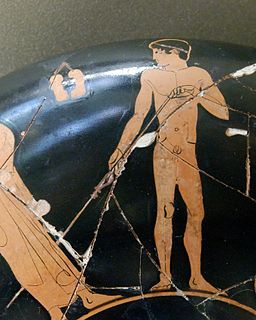 W
WThe mesangylon was a javelin with a strap for throwing it by. Its name is attested, among others, in the works of Euripides, Polybius and Arrian. It is one of the weapons used in Alexander's experimental phalanx
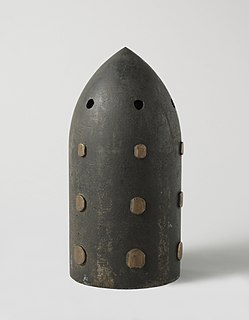 W
WPalliser shot is an early British armour-piercing artillery projectile, intended to pierce the armour protection of warships being developed in the second half of the 19th century, It was invented by Sir William Palliser, after whom it is named.
 W
WA pellet is a non-spherical projectile designed to be shot from an air gun, and an airgun that shoots such pellets is commonly known as a pellet gun. Air gun pellets differ from bullets and shot used in firearms in terms of the pressures encountered; airguns operate at pressures as low as 50 atmospheres, while firearms operate at thousands of atmospheres. Airguns generally use a slightly undersized projectile that is designed to obturate upon shooting so as to seal the bore, and engage the rifling; firearms have sufficient pressure to force a slightly oversized bullet to fit the bore in order to form a tight seal. Since pellets may be shot through a smoothbore barrel, they are often designed to be inherently stable, much like the Foster slugs used in smoothbore shotguns.
 W
WPumpkin chucking, or for rhyming purposes punkin chunkin or pumpkin chunking, is the sport of hurling or 'chucking' a pumpkin solely by mechanical means for distance. The devices used include slingshots, catapults, centrifugals, trebuchets, and pneumatic cannons.
 W
WA round shot is a solid spherical projectile without explosive charge launched from a gun. Its diameter is slightly less than the bore of the barrel from which it is shot. A round shot fired from a large-caliber gun is also called a cannonball.
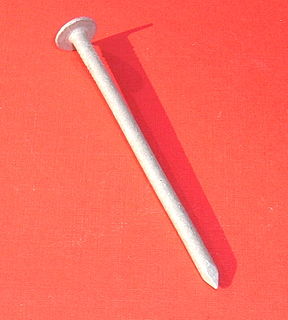 W
WSectional density is the ratio of an object's mass to its cross sectional area with respect to a given axis. It conveys how well an object's mass is distributed to overcome resistance along that axis.
 W
WR-045/R-046 Starshel is a type of electronic countermeasures ammunition, fired by 122 mm or 152 mm artillery guns. It is designed to completely disrupt enemy radio communications on the battlefield.
 W
WA modern torpedo is an underwater ranged weapon launched above or below the water surface, self-propelled towards a target, and with an explosive warhead designed to detonate either on contact with or in proximity to the target. Historically, such a device was called an automotive, automobile, locomotive or fish torpedo; colloquially a fish. The term torpedo originally applied to a variety of devices, most of which would today be called mines. From about 1900, torpedo has been used strictly to designate a self-propelled underwater explosive device.
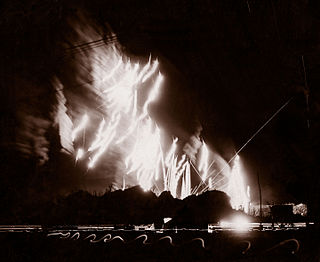 W
WTracer ammunition (tracers) are bullets or cannon-caliber projectiles that are built with a small pyrotechnic charge in their base. When fired, the pyrotechnic composition is ignited by the burning powder and burns very brightly, making the projectile trajectory visible to the naked eye during daylight, and very bright during nighttime firing. This allows the shooter to visually trace the flight path of the projectile and thus make necessary ballistic corrections, without having to confirm projectile impacts and without even using the sights of the weapon. Tracer fire can also be used as a marking tool to signal other shooters to concentrate their fire on a particular target during battle.
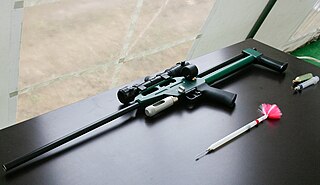 W
WA tranquillizer gun, capture gun or dart gun, is a non-lethal air gun used to reduce irritability or agitation in animals via anesthetic drugs commonly referred to as tranquilizers. The gun shoots a dart tipped with a hypodermic needle and filled with a dose of tranquilizer solution that is either sedative, comatosing or paralytic. The gun makes it possible for wild animals to be sedated, while domestic animals are sedated in the same manner that humans are.
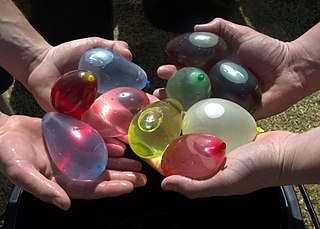 W
WA water balloon or water bomb is a latex rubber balloon filled with water. Water balloons are used in a summer pastime of cooling off through water balloon wars. Water balloons are also popular for celebrations, including celebrating Holi and Carnival in India, Nepal, and several other countries.